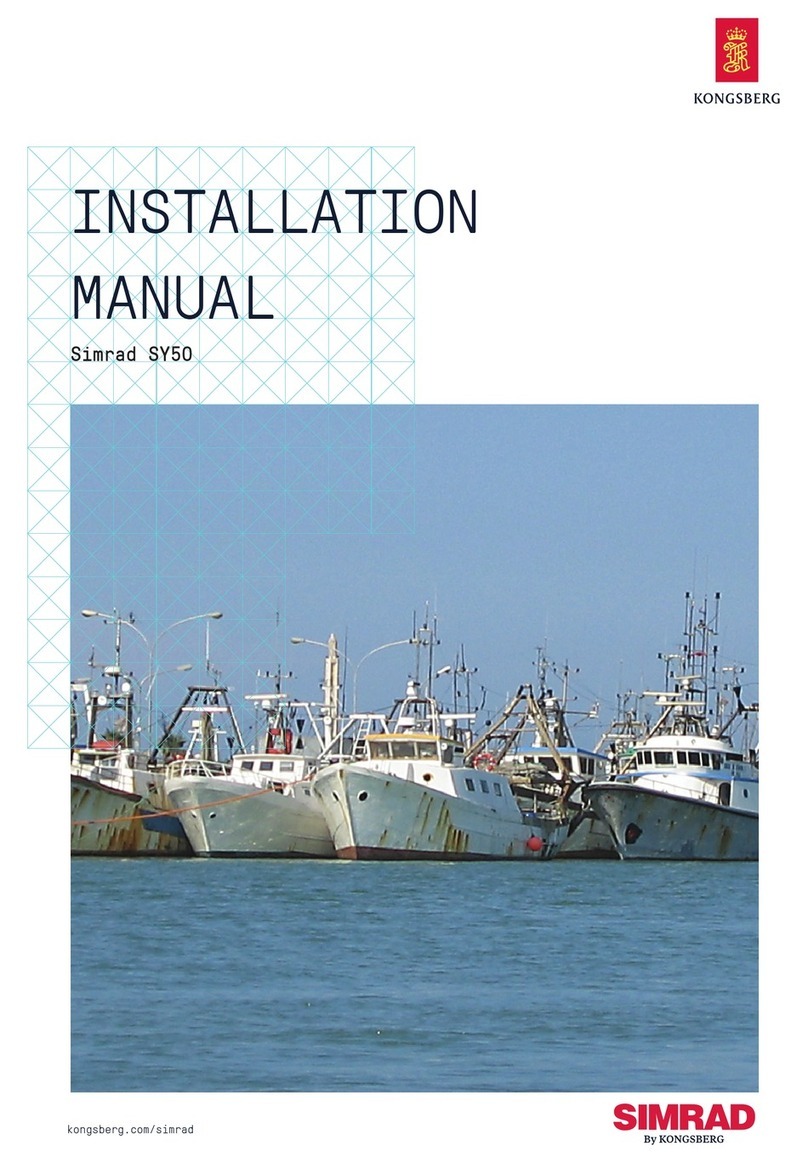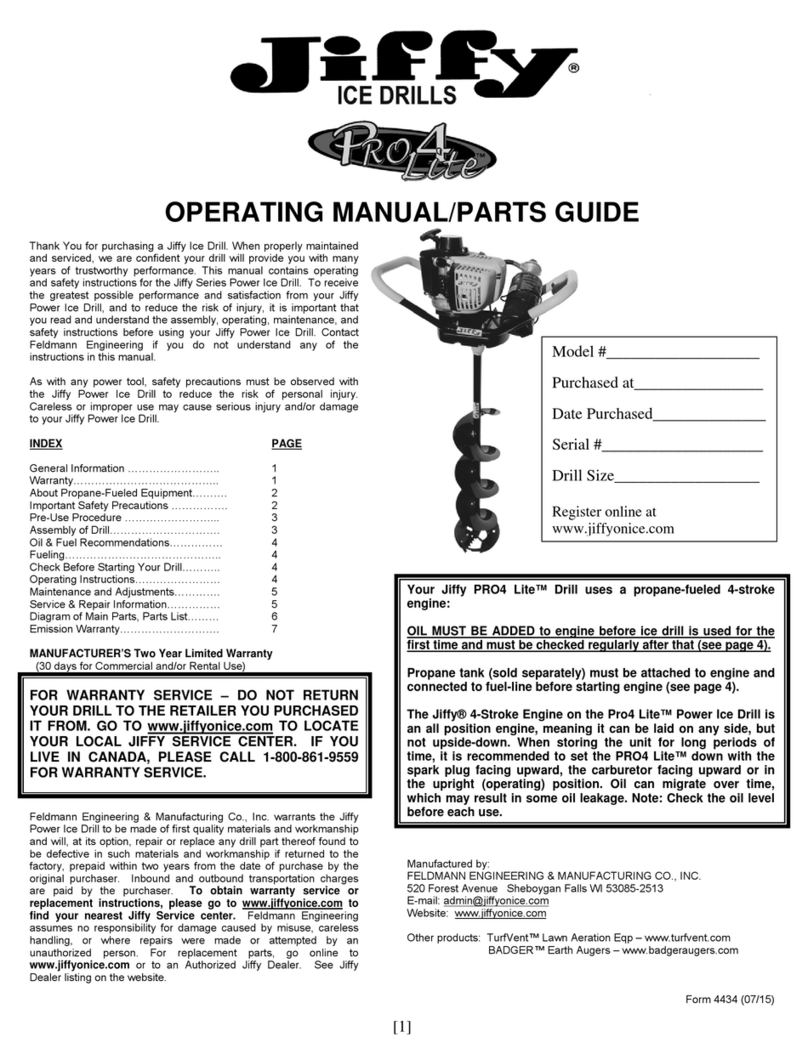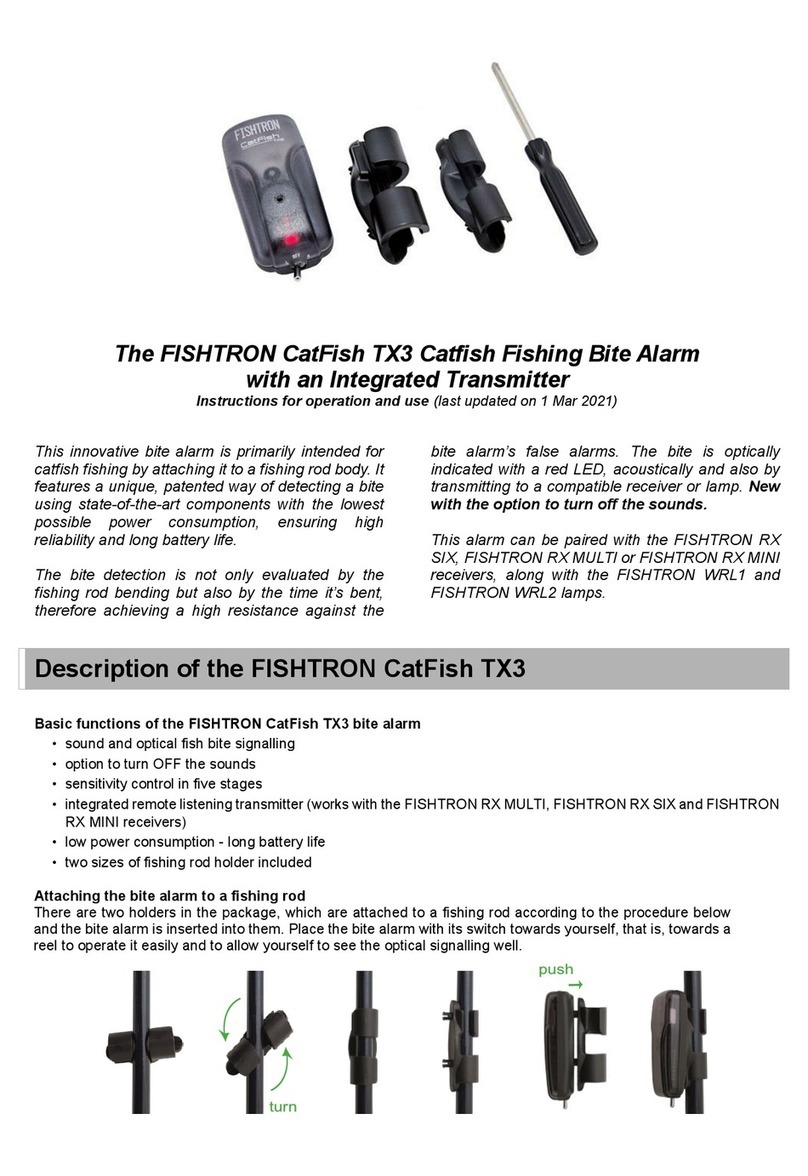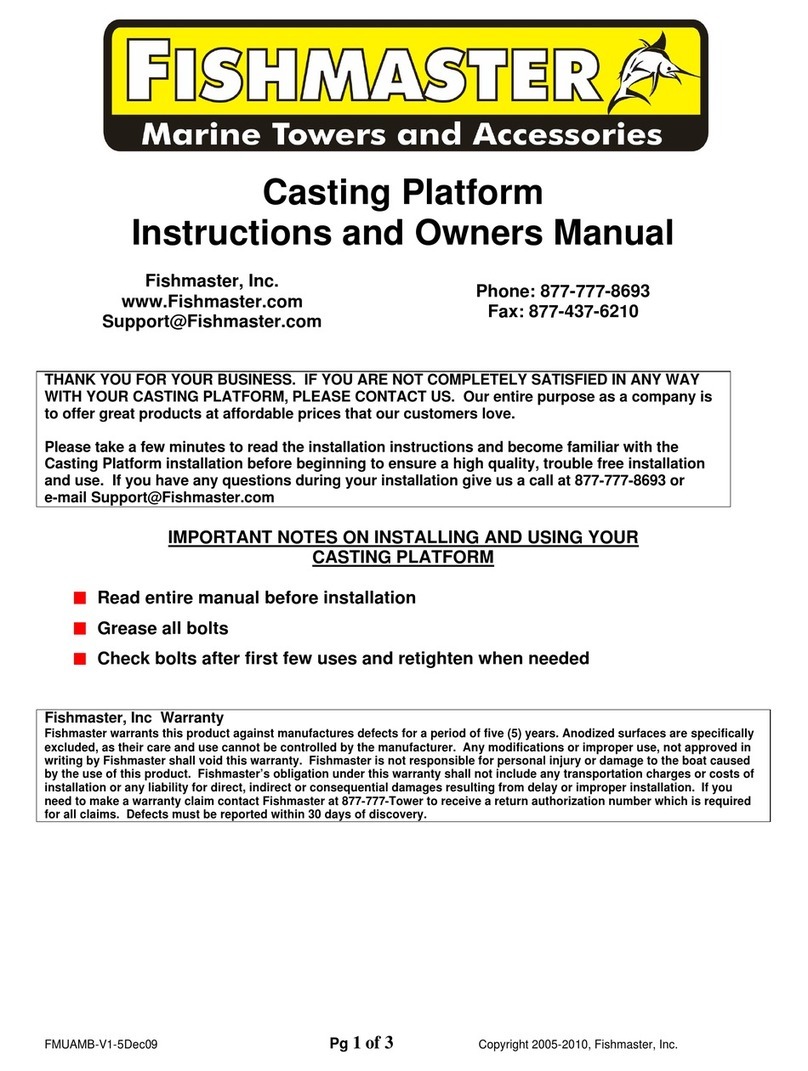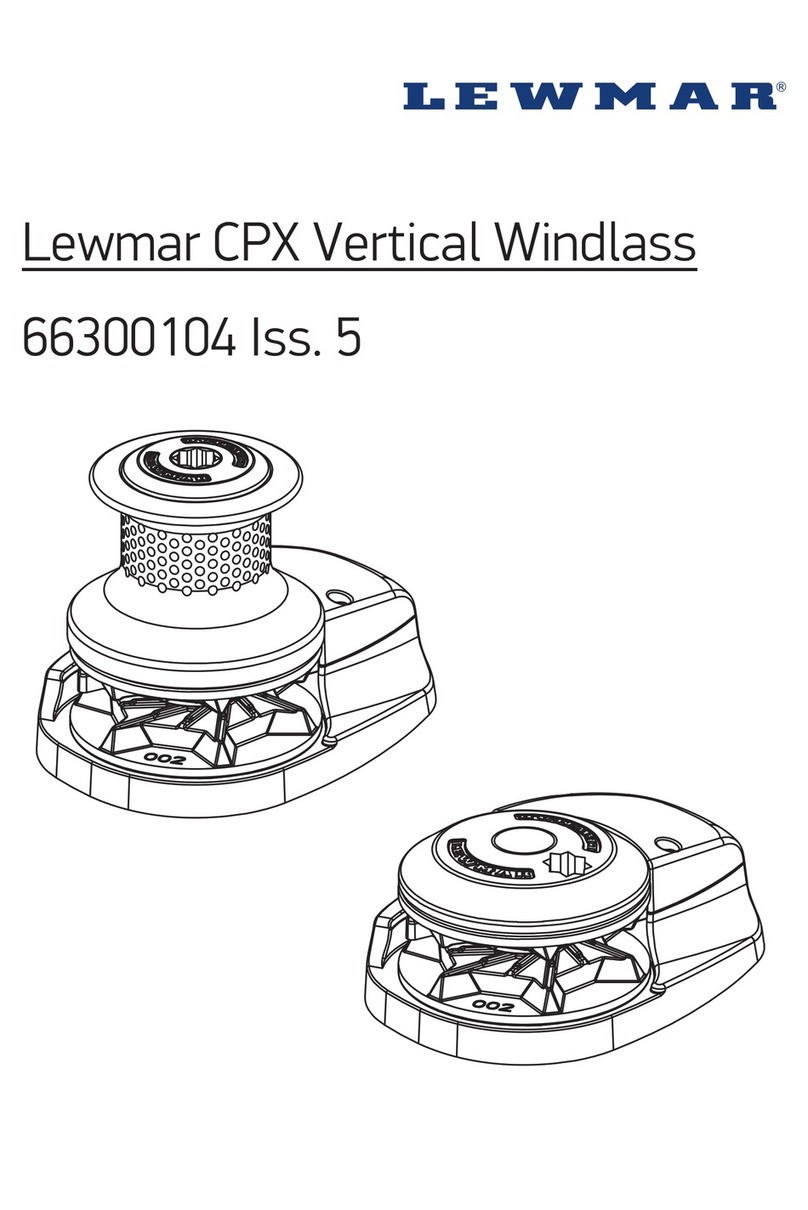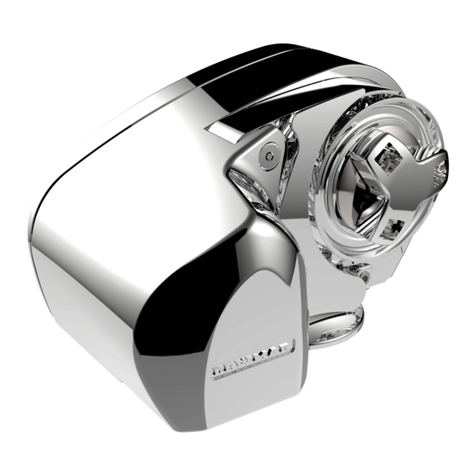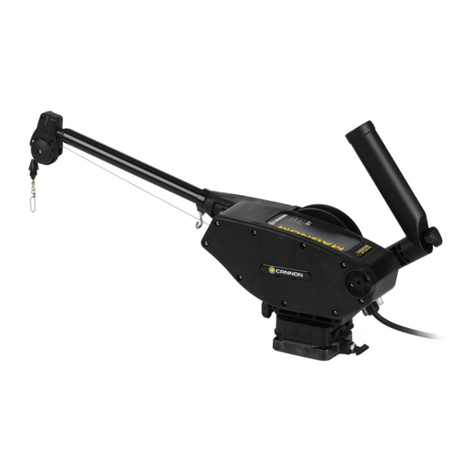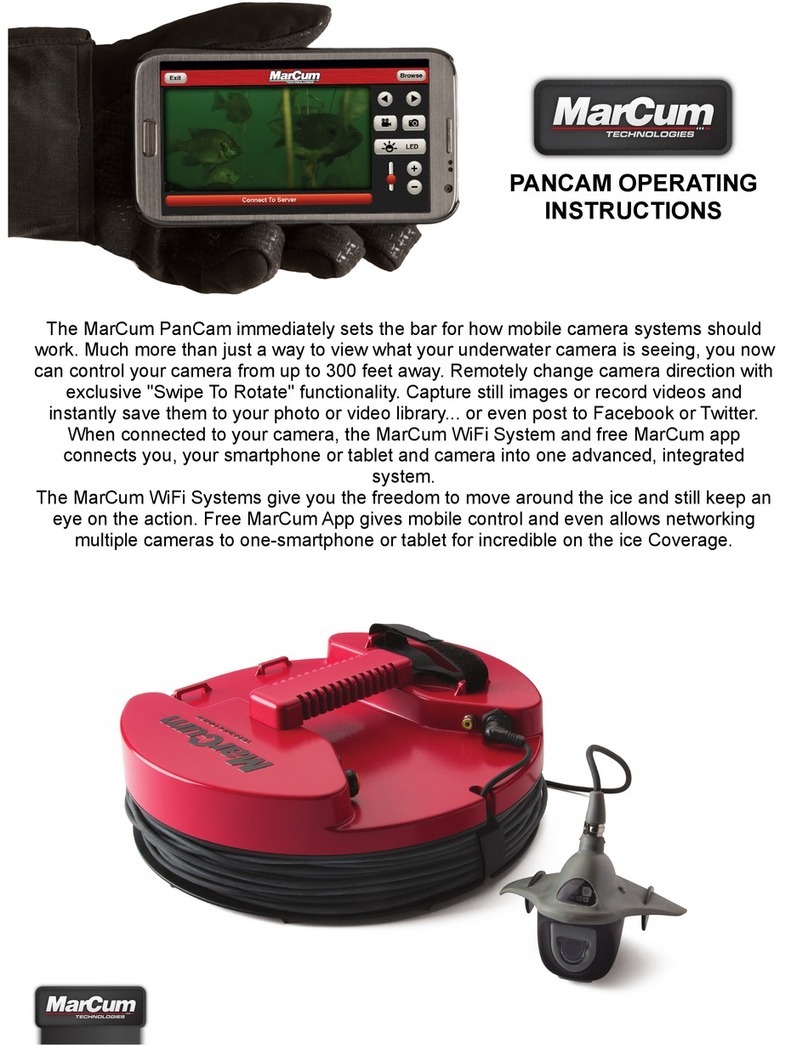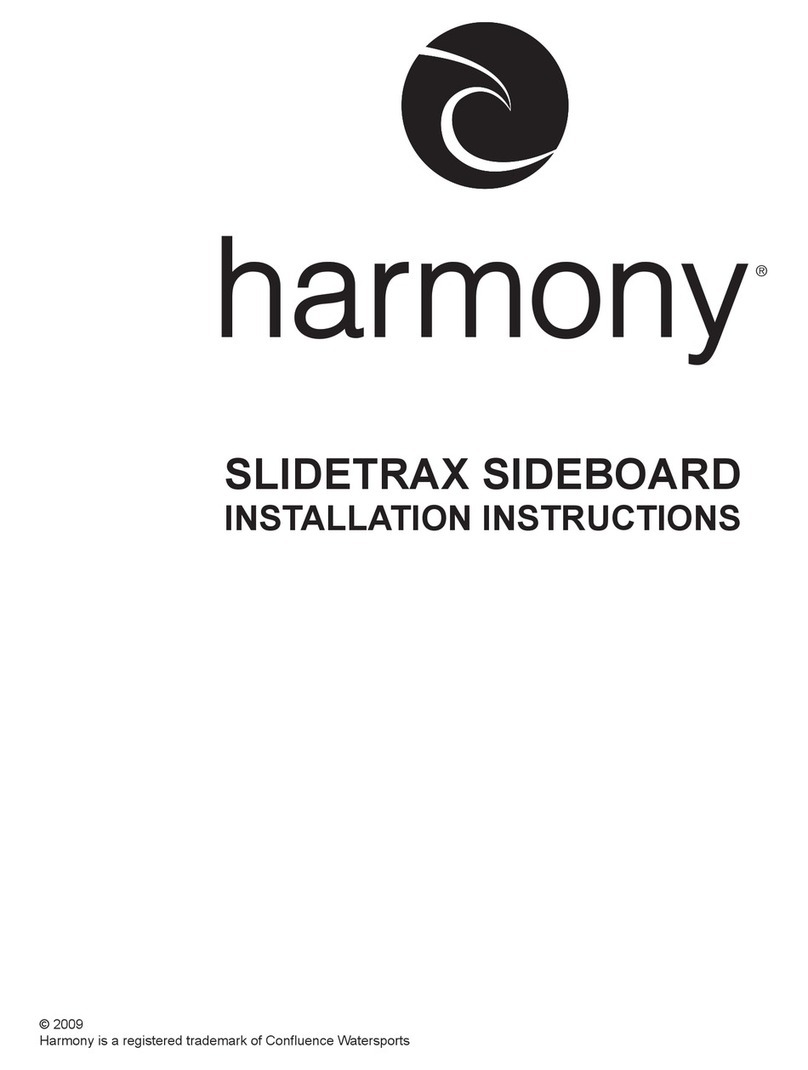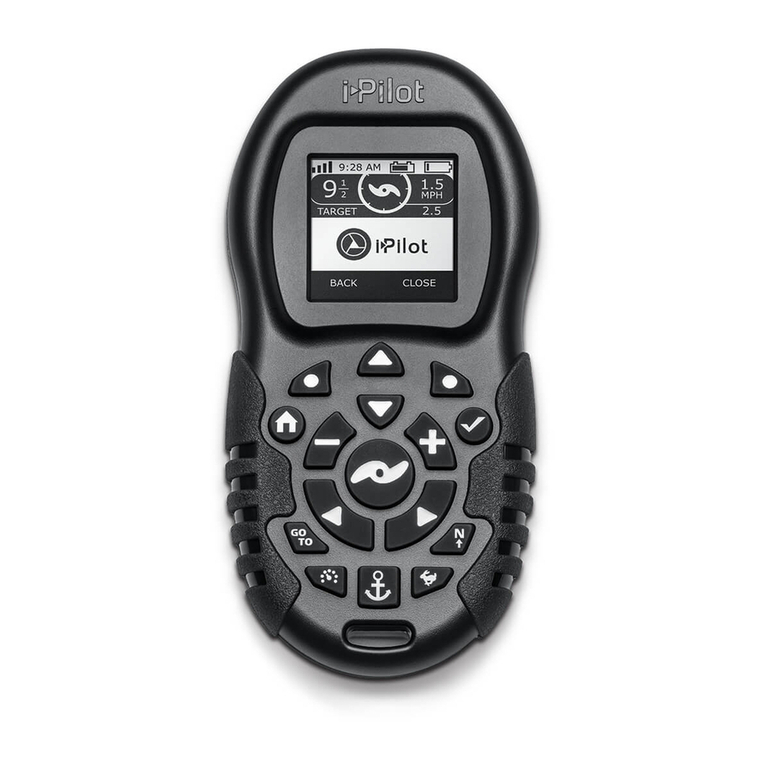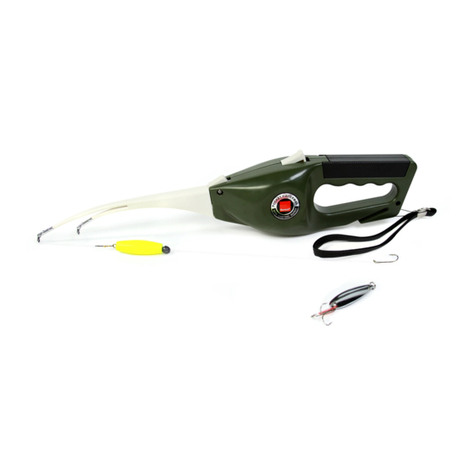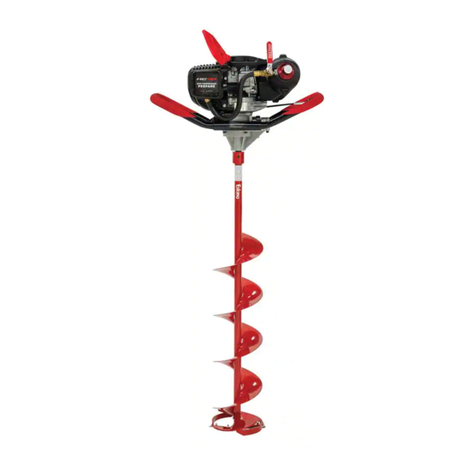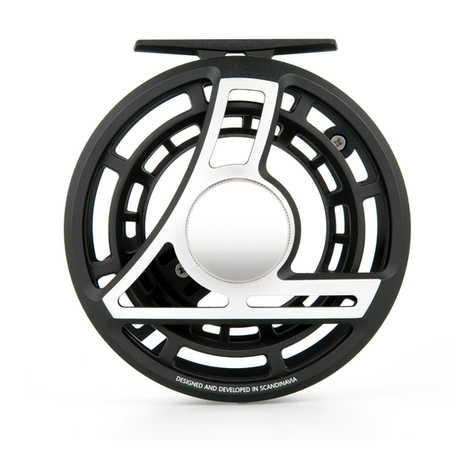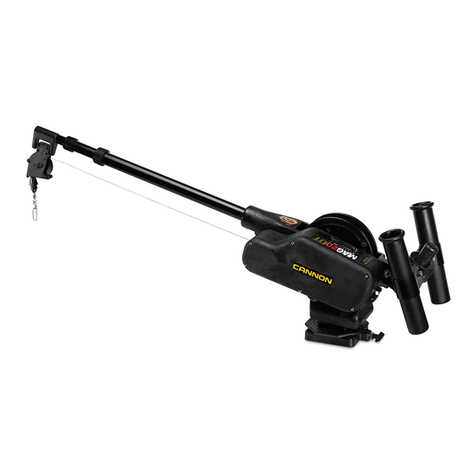Lewmar Pro-Sport/Series/Fish Windlass | 4
WARNING!
IMPORTANT: Read these notes
before continuing.
2.1 Windlass general
Classification Societies and Lewmar
require that a vessel at anchor must
have its chain/rode held by a chain
stopper or equivalent strong point at
all times!
At all times it is the responsibility
of the boat user to ensure that the
anchor and rode are properly stowed
for the prevailing sea conditions.
This is particularly important with
high-speed powerboats, because an
anchor accidentally deploying while
under way can cause considerable
damage. An anchor windlass is
mounted in the most exposed position
on a vessel and is thus subject to
severe atmospheric attack resulting in
a possibility of corrosion in excess of
that experienced with most other items
of deck equipment. As the windlass
may only be used infrequently, the risk
of corrosion is further increased. It is
essential that the windlass is regularly
examined, operated and given any
necessary maintenance.
Please ensure that you thoroughly
understand the operation and safety
requirements of the windlass before
commencing the installation. Only
persons who are completely familiar
with the controls and those who have
been fully made aware of the correct
use of the windlass should be allowed
to use it. If there is any doubt of how
to install or operate this unit please
seek advice from a suitably qualified
engineer.
• Windlasses used incorrectly could
cause harm to equipment or crew.
• Windlasses should be used with care
and treated with respect.
• Boating, like many other activities
can be hazardous. Even the correct
selection, maintenance and use of
proper equipment cannot eliminate
the potential for danger, serious
injury or death.
• Lewmar windlasses are designed
and supplied for anchor control in
marine applications and are not
to be used in conjunction with any
other use.
WARNUNG!
WICHTIG : Vor dem Weiterarbeiten
bitte folgende Hinweise lesen.
2.1 Ankerwinden generell
Alle Zertifizierungs- und Klassifizierungs
Gesellschaften sowie auch Lewmar bestehen
darauf, dass ein Schiff vor Anker liegend
die Last seines Ankergeschirres auf einen
Kettenstopper entsprechend dimensioniert
an einem dafür vorgesehene Platz zu jeder
Zeit auffängt!
Zu jeder Zeit ist es in der Verantwortlichkeit
des Schiffsführers sicher zu stellen, dass
der Anker entsprechend der Seebedingungen
gesichert ist. Dies ist besonders bei schnellen
Motoryachten wichtig, wo ein Anker durch
die Schiffsbewegungen ungesichert sehr
gefährliche Bewegungen machen kann,
die auch das Schiff beschädigen werden.
Eine Ankerwinde ist in der Regel am weitest
vorlichen Punkt eines Schiffs montiert, wo die
atmosphärischen Belastungen zu Korrosion
und Abnutzungen führen können, wie sonst
nur wenige Ausrüstungen an Bord. Da die
Ankerwinde in der Regel nur sporadisch
verwendet wird, ist dort das Risiko von
Korrosionsbefall noch höher wird. Es ist
besonders wichtig, dass Ankerwinden in
regelmäßigen Abständen überprüft, benutzt
und entsprechend gewartet und gepflegt wird.
Bitte stellen sie sicher, dass sie diese
Anleitung komplett durchgelesen und
verstanden haben, bevor sie mit der
Montage oder dem Einsatz der Ankerwinde
beginnen. Es sollten ausschließlich Personen
die Ankerwinde bedienen dürfen, die über
die sichere und korrekte Bedienung einer
Ankerwinde belehrt wurden. Sollte ihnen
die korrekte Montage der Ankerwinde nicht
verständlich und/oder klar sein, dann
wenden sie sich bitte an einen entsprechend
qualifizierten Techniker.
• Falscher Einsatz und falsche Bedienung
der Ankerwinde können zu Schäden an
Personen und Ausrüstungen führen.
• Ankerwinden sollten umsichtig und mit
Respekt bedient werden.
• Wassersport kann wie viele Aktivitäten
gefährlich sein. Selbst eine korrekte
Auswahl, Wartung und korrekter
Einsatz entsprechender Ausrüstung
kann die potentielle Gefahr, ernsthafte
Verletzungen als auch tödliche Unfälle
nicht eliminieren.
• Lewmar Ankerwinden werden für die
Kontrolle von Ankergeschirr zum Einsatz
auf Schiffen designt und geliefert.
Andere Einsatzzwecke sind ausdrücklich
ausgeschlossen.
RECOMMANDATIONS!
IMPORTANT : Veuillez lire ces
instructions avant de poursuivre.
2.1 Guindeaux – Généralités
Les sociétés de classification et la société
Lewmar exigent que les navires à l’ancre
disposent d’une ligne de mouillage maintenue
par un stoppeur de chaîne ou un autre point
de fixation solide à tout instant!
En toutes circonstances, il est de la
responsabilité de l’utilisateur de l’embarcation
de s’assurer que l’ancre et la ligne de
mouillage sont proprement arrimées pour
les conditions de mer en vigueur. Cela est
particulièrement important pour les bateaux
à moteur à grande vitesse, car une ancre
accidentellement larguée en cours de route
peut provoquer des dégâts considérables. Un
guindeau est situé dans la partie du navire
la plus exposée, et donc, est soumis à des
conditions atmosphériques sévères avec une
exposition à la corrosion plus importante que
celle subie par la plupart des autres éléments
de l’équipement de pont. Le guindeau
n’est pas toujours utilisé fréquemment,
le risque de corrosion est accru. Il est
essentiel que le guindeau soit régulièrement
examiné, utilisé et entretenu. Assurez-vous
que vous comprenez les conditions de
fonctionnement et la sécurité du guindeau
avant de commencer l’installation. Seules les
personnes qui sont complètement familiarisé
avec les commandes et ceux qui ont été
pleinement informés de la bonne utilisation du
guindeau doivent être autorisés à l’utiliser. S’il
y a un doute sur la façon d’installer ou de faire
fonctionner cet appareil vous êtes priés de
demander conseil auprès d’un professionnel
qualifié.
• L’utilisation incorrecte du guindeau
peut entrainer des dommages à
l’équipement ou l’équipage.
• Un guindeau doit être utilisé avec
soin et traité avec respect.
• La navigation, comme beaucoup
d’activités peut être dangereuse.
Même un choix pertinent, ainsi
que l’entretien et l’utilisation d’un
équipement adéquat ne peut pas
éliminer le danger potentiel, les
blessures graves ou le risque de
mort.
• Les guindeaux Lewmar sont conçus
et fabriqués pour contrôler l’ancre
dans les applications marines et ne
doivent être utilisées pour un autre
usage.
¡ADVERTENCIA!
IMPORTANTE : Lea estas notas antes
de continuar.
2.1 Molinetes General
Las Sociedades de Clasificación y Lewmar
requieren que una embarcación fondeada
debe tener su cadena/cabo fijada con
un freno de cadena o punto similar lo
suficientemente fuerte, ¡ en todo momento
! Es responsabilidad del usuario de la
embarcación asegurar que tanto el ancla
como el cabo están debidamente fijados
para cualquier condición de tiempo. Esto es
particularmente importante en barcos de
motor pesados, porque puede causar graves
daños. Un sistema de fondeo esta situado en
un lugar más expuesto en la embarcación y
esta sujeto a ataques atmosféricos severos
con el resultado de una posible corrosión
por exceso como otros elementos del equipo
de cubierta. Como un molinete puede ser
utilizado de forma poco frecuente, el riesgo de
corrosión es mucho mayor. Es esencial que el
molinete sea regularmente examinado junto
con un mantenimiento en profundidad.
Por favor, asegúrese de que entiende las
instrucciones de funcionamiento y medidas
de seguridad requeridas por el molinete antes
de empezar la instalación. Solo personas que
están completamente familiarizadas con los
controles y las que han sido completamente
conscientes del correcto uso del molinete
están autorizadas ha usarlo.SI tiene cualquier
duda de como instalar o manejar esta
unidad, por favor póngase en contacto con un
ingeniero cualificado.
• Los molinetes utilizados
incorrectamente pueden causar
daños tanto a equipos como
tripulación.
• Los molinetes deben ser utilizados
con precaución y tratados con
respeto.
• Navegar, como muchas otras
actividades pueden ser peligrosas.
Incluso seleccionando el correcto,
manteniéndolo y haciendo un huso
adecuado del equipo no se elimina
un potencial peligro, serios daños o
la muerte.
• Los molinetes Lewmar están
diseñados y suministrados para
fondear en aplicaciones marinas y
no puede ser utilizados en relación
con cualquier otro uso.
AVVERTIMENTI!
IMPORTANTE : prima di continuare,
leggere la nota seguente.
2.1 Norme generiche
Le norme di sicurezza, gli enti
certificatori e Lewmar richiedono
tassativamente che, durante lo
stazionamento all’ancora, il carico
sia tenuto da un ferma catena o
da un punto di fissaggio di elevata
resistenza.
E’ responsabilità dell’utilizzatore di
assicurarsi che durante la navigazione
l’ancora sia adeguatamente stivata
e fissata. Questa precauzione è tanto
più importante quanto maggiore è
la velocità di navigazione e peggiori
le condizioni del mare. In queste
condizioni infatti un’ancora filata per
errore durante la navigazione può
avere effetti molto gravi.
Data la sua posizione e l’uso non
sempre frequente, il salpa ancore è
particolarmente esposto al rischio di
ossidazione e corrosione, pertanto è
necessario provvedere ad una costante
ispezione delle sue parti ed alla dovuta
manutenzione.
Assicurarsi di aver letto e compreso
ogni parte del presente manuale
prima di procedere con l’installazione
e l’utilizzo. Solo le persone che
conoscono come operare dovrebbero
essere autorizzate all’uso del salpa
ancore. In caso di dubbi circa
l’installazione o l’uso rivolgersi sempre
ad un consulente esperto.
• Salpa ancore utilizzati in modo
inappropriato possono causare
danni a persone e/o cose.
• Prestare la massima attenzione
durante l’uso di apparecchiature
potenti.
• Anche l’uso più accorto può essere
fonte di danni, anche gravi.
• I prodotti Lewmar sono forniti
esclusivamente per l’uso nautico
diportistico, nessun altro utilizzo
deve essere fatto.
VARNINGAR!
VIKTIGT : Läs dessa anvisningar
innan ni fortsätter.
2.1 Ankarspel
Klassningssällskapen och Lewmar
kräver att ett fartyg till ankars
alltid har kättingen/linan låst med
kättingstopp/linlås eller annan
tillräckligt stark låsning!
Det är alltid befälhavaren ombord som
ansvarar för att ankaret och kättingen/
linan är stuvad på ett för rådande
sjöförhållanden säkert sätt. Detta
är särskilt viktigt på snabbgående
motorbåtar, eftersom ett ankare som
går i sjön under gång kan orsaka
allvarliga skador. Ankarspel monteras
på den mest utsatta platsen ombord
och utsätts för svåra förhållanden,
som kan leda till korrosion av en
grad som man inte hittar på annan
däcksutrustning. Eftersom ankarspel
för det mesta inte används särskilt
ofta blir risken för korrosion oftast
större. Det är också därför det är
viktigt att ankarspelet inspekteras och
körs regelbundet och att underhållet
sköts korrekt.
Se till att du förstår de drift- och
säkerhetskrav som gäller för
ankarspelet innan du påbörjar
installationen. Låt endast personer
med god kännedom om och vana vid
den här typen av kontroller och som
är fullt införstådda med hur spelet
skall hanteras använda det. Vid
tveksamheter om installation eller
användning av spelet bör man alltid ta
hjälp av kompetent tekniker.
• Felatkig hantering av ankarspel kan
leda till skador på både besättning
och utrustning.
• Ankarspel skall användas med
iakttagande gott sjömanskap och
sunt förnuft.
• Båtlivet kan, precis som andra
aktiviteter, vara farligt. Inte ens rätt
val, underhåll och användning av
utrustningen kan undanröja risken
för fara, svår personskada och till
och med dödsfall.
• Våra ankarspel är konstruerade
och levererade för ankarhantering i
marin miljö och skall inte användas i
andra sammanhang.
2. Safety Notices 2. Einleitung 2. Introduction 2. Introducción 2. Introduzione 2. Introduktion
